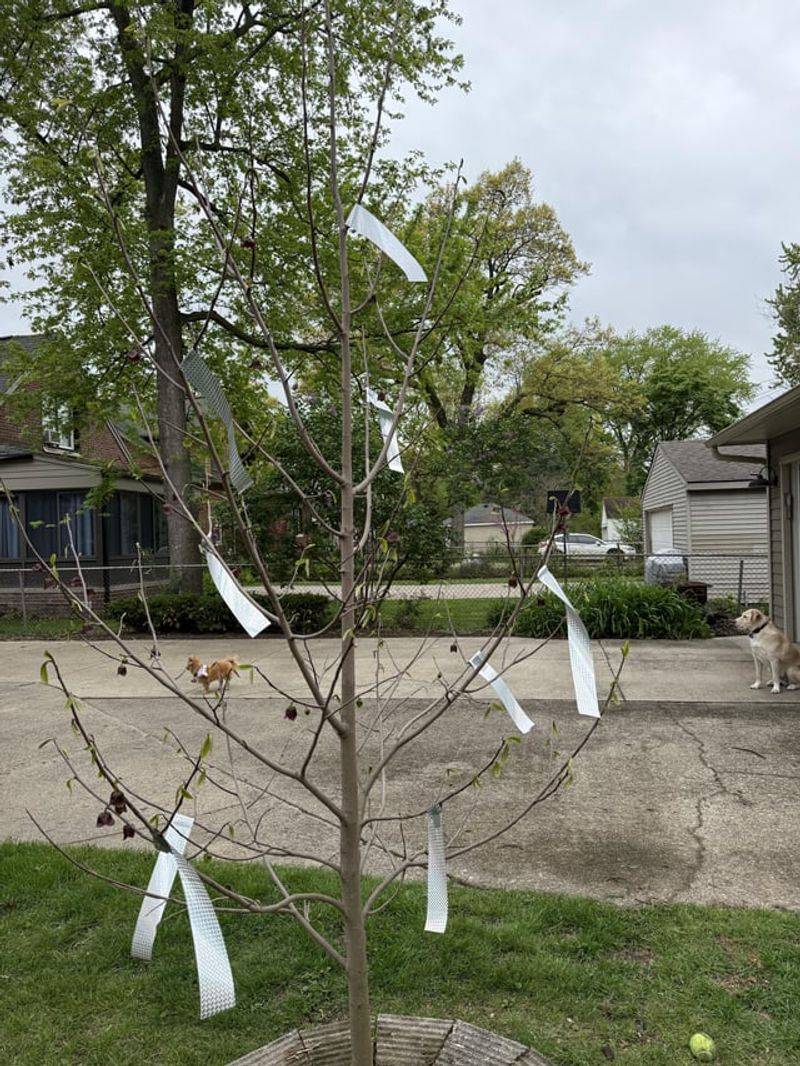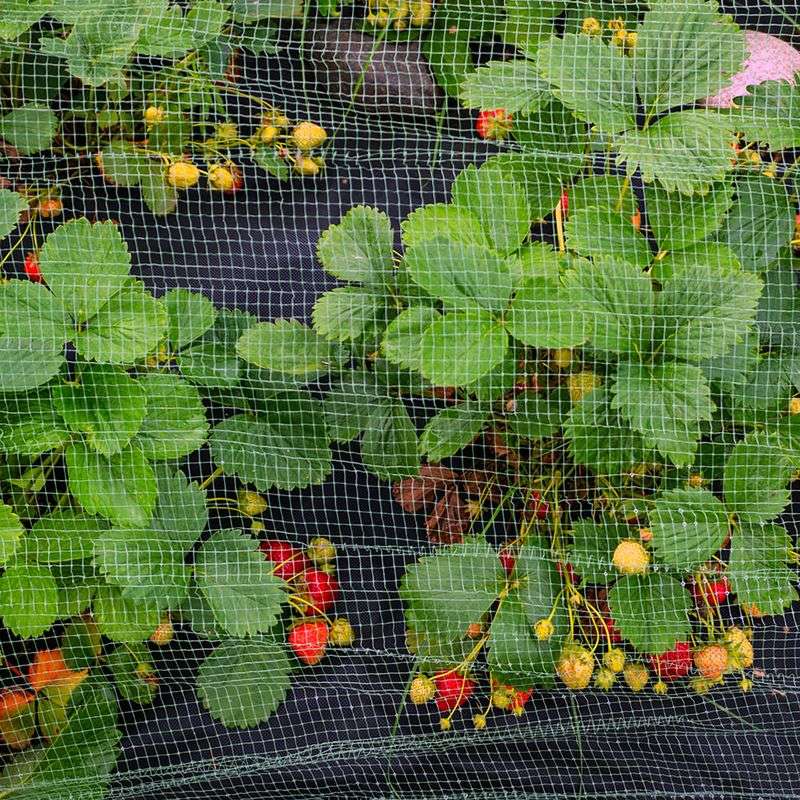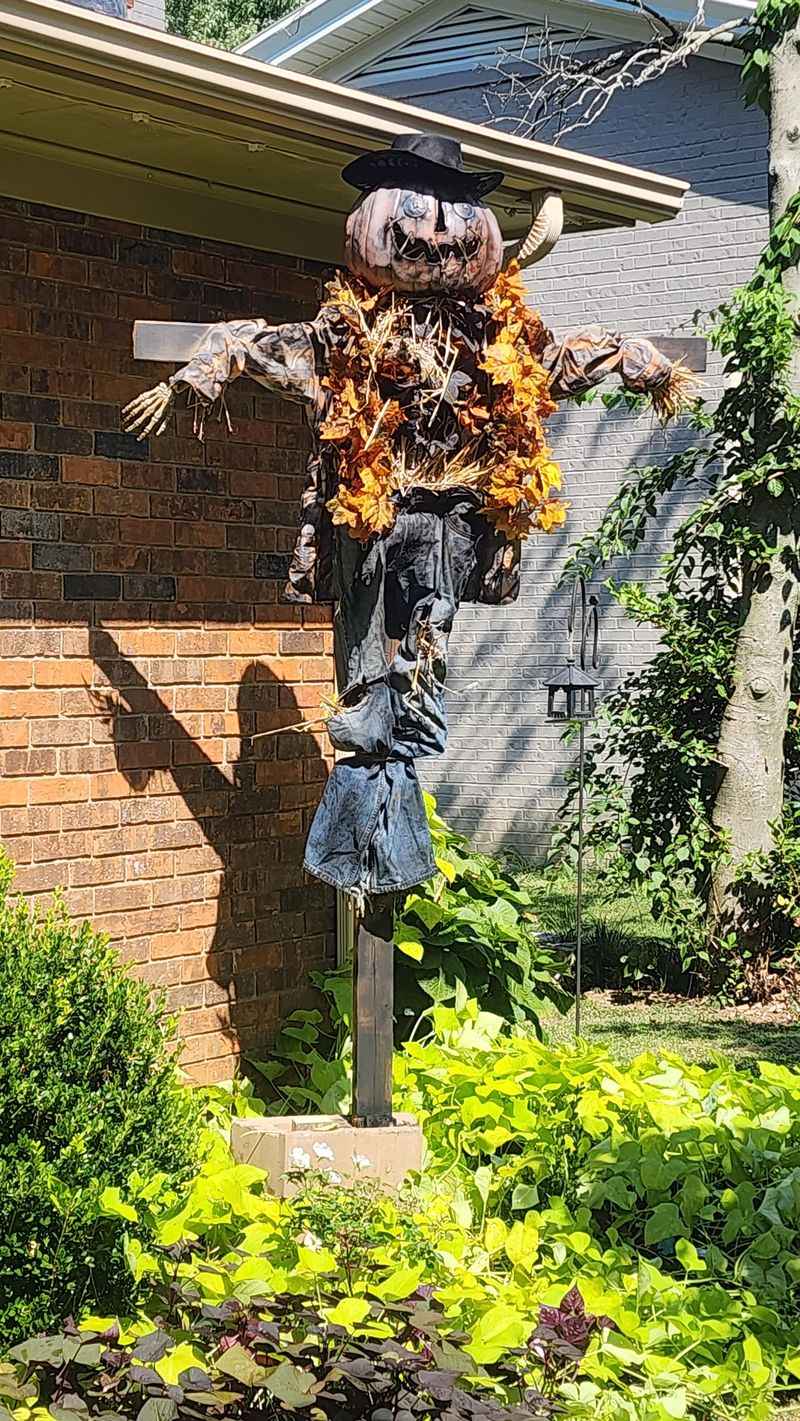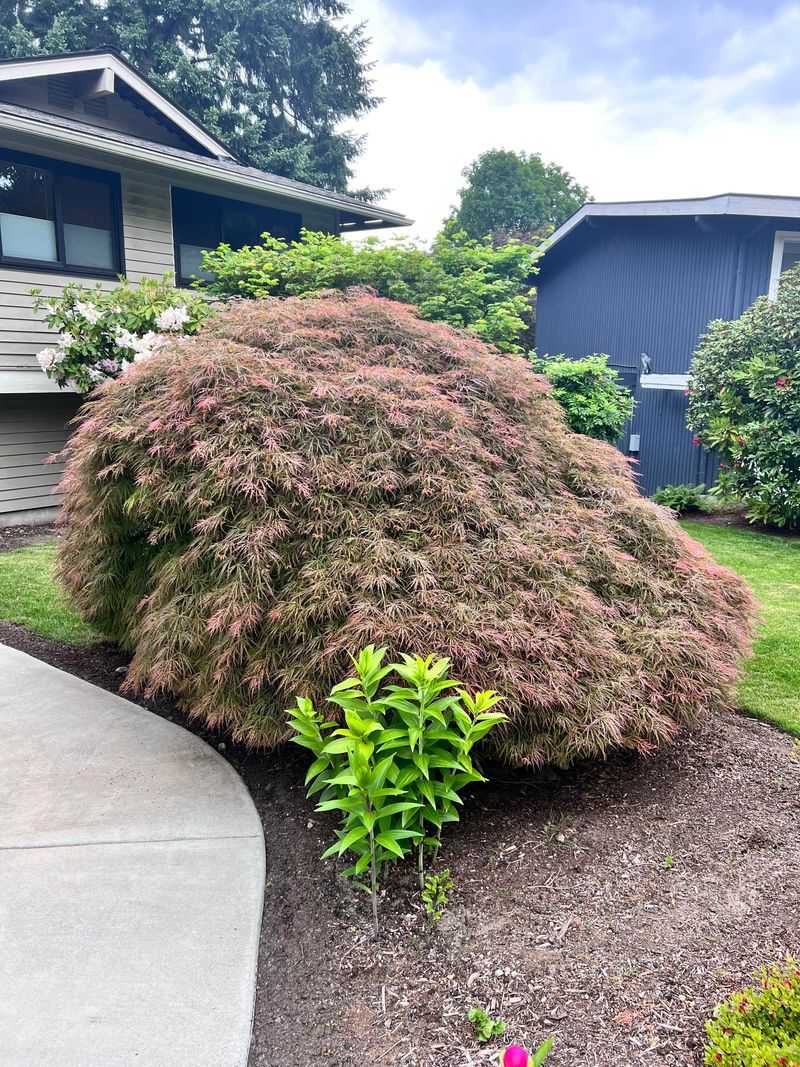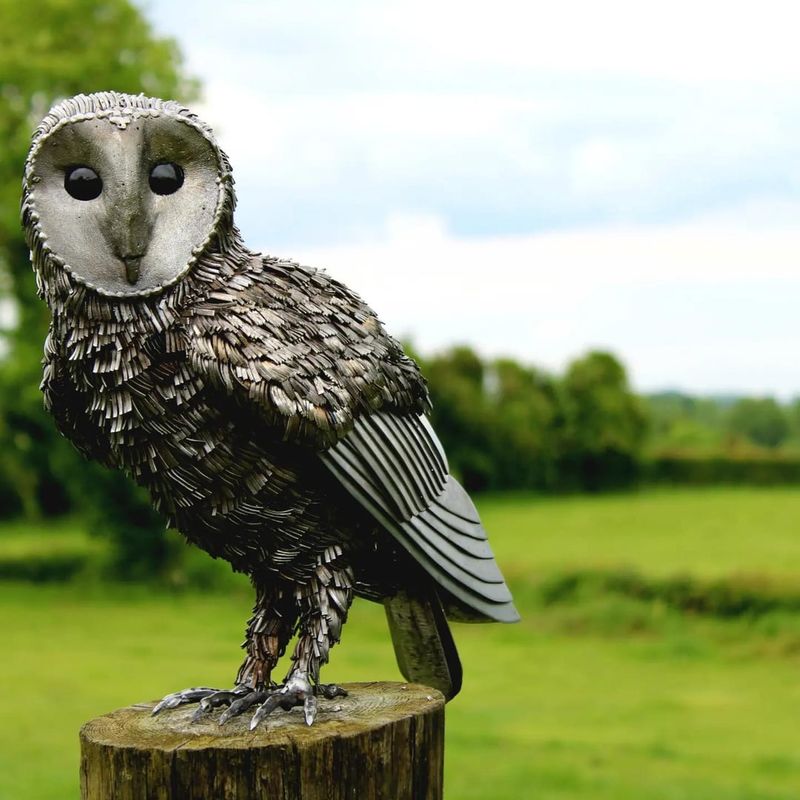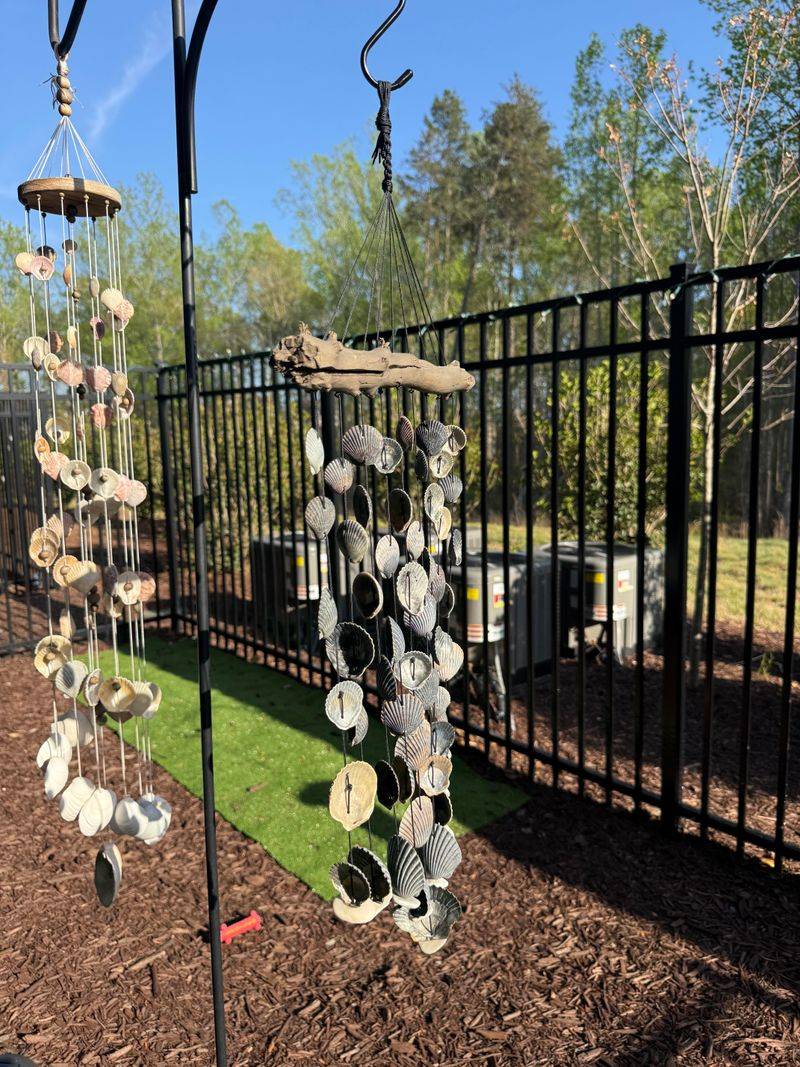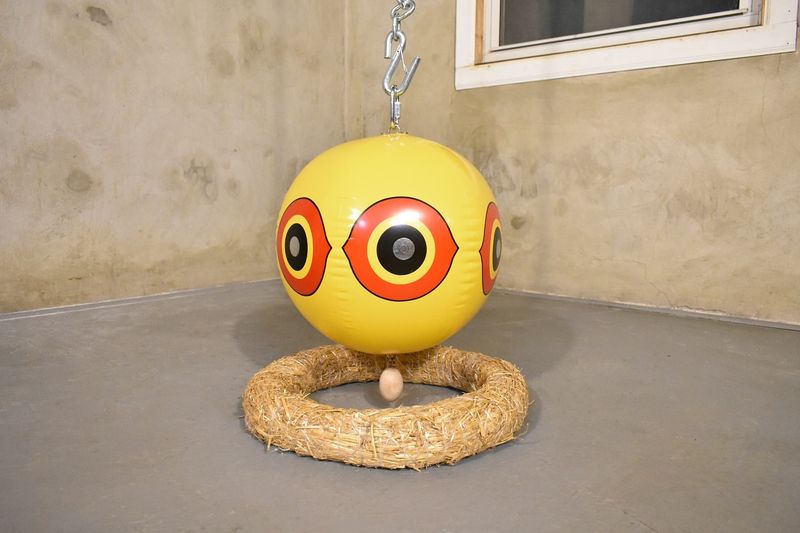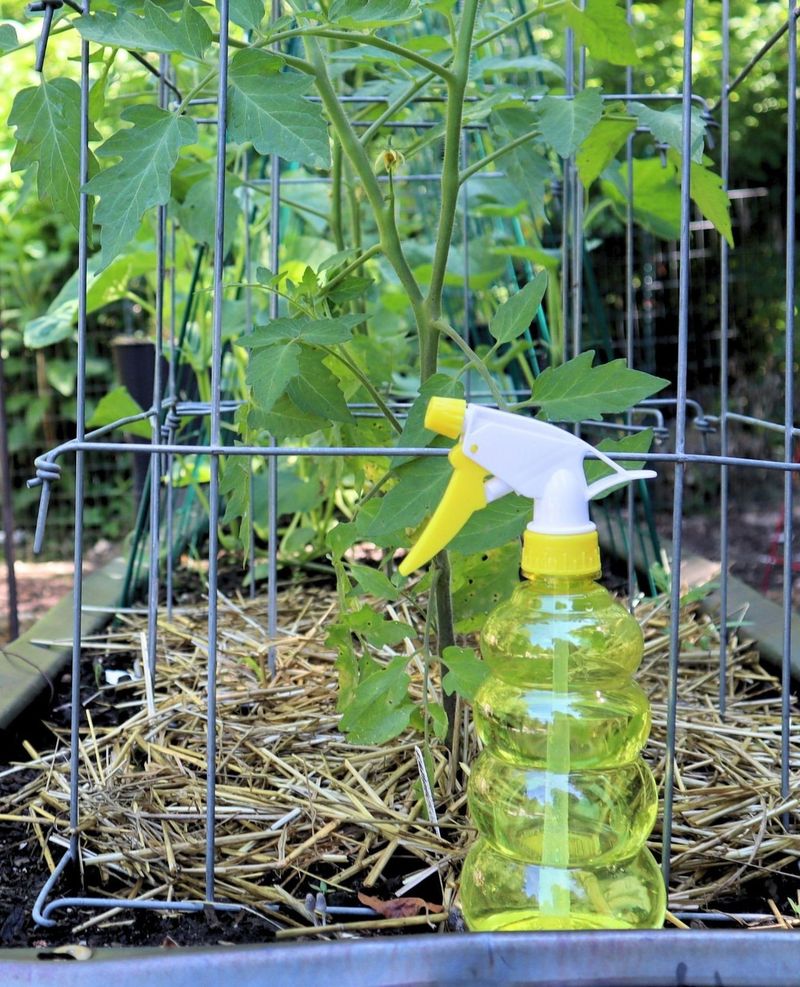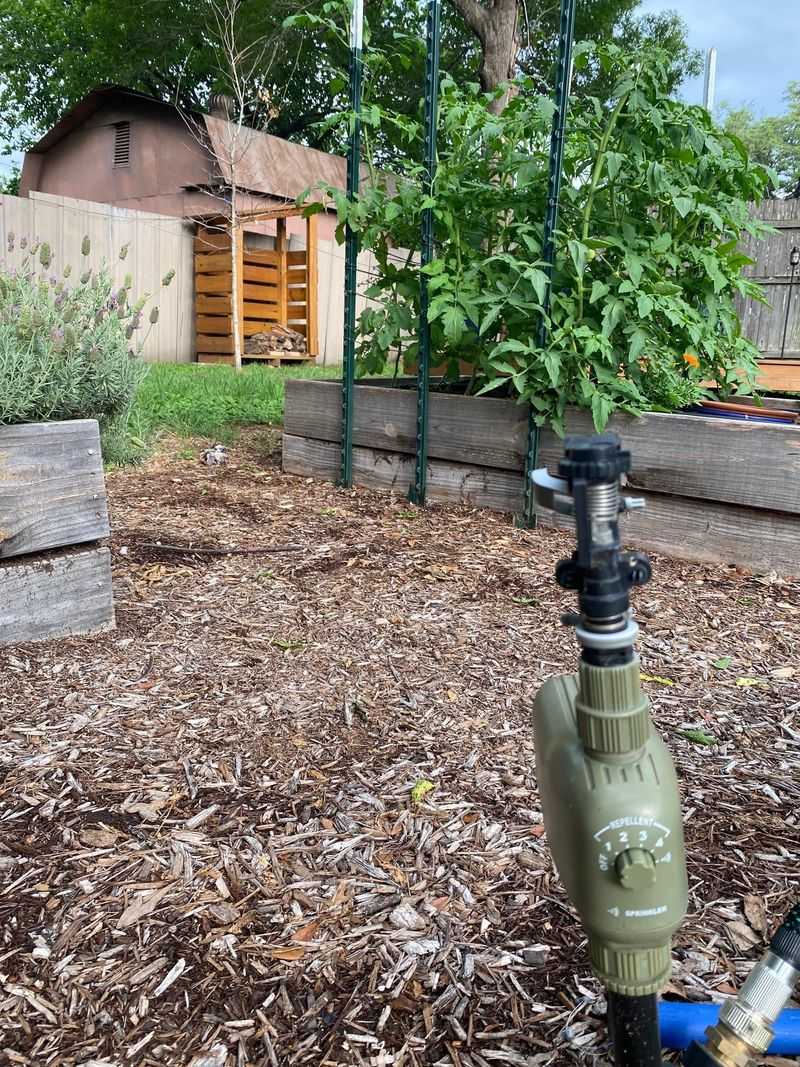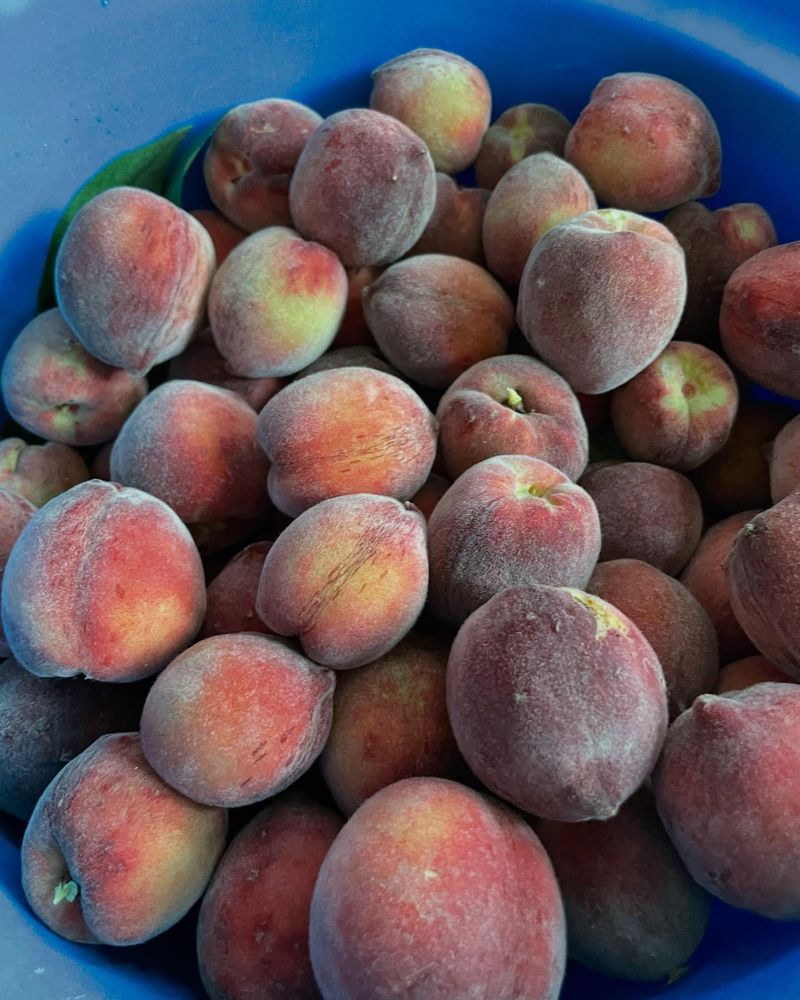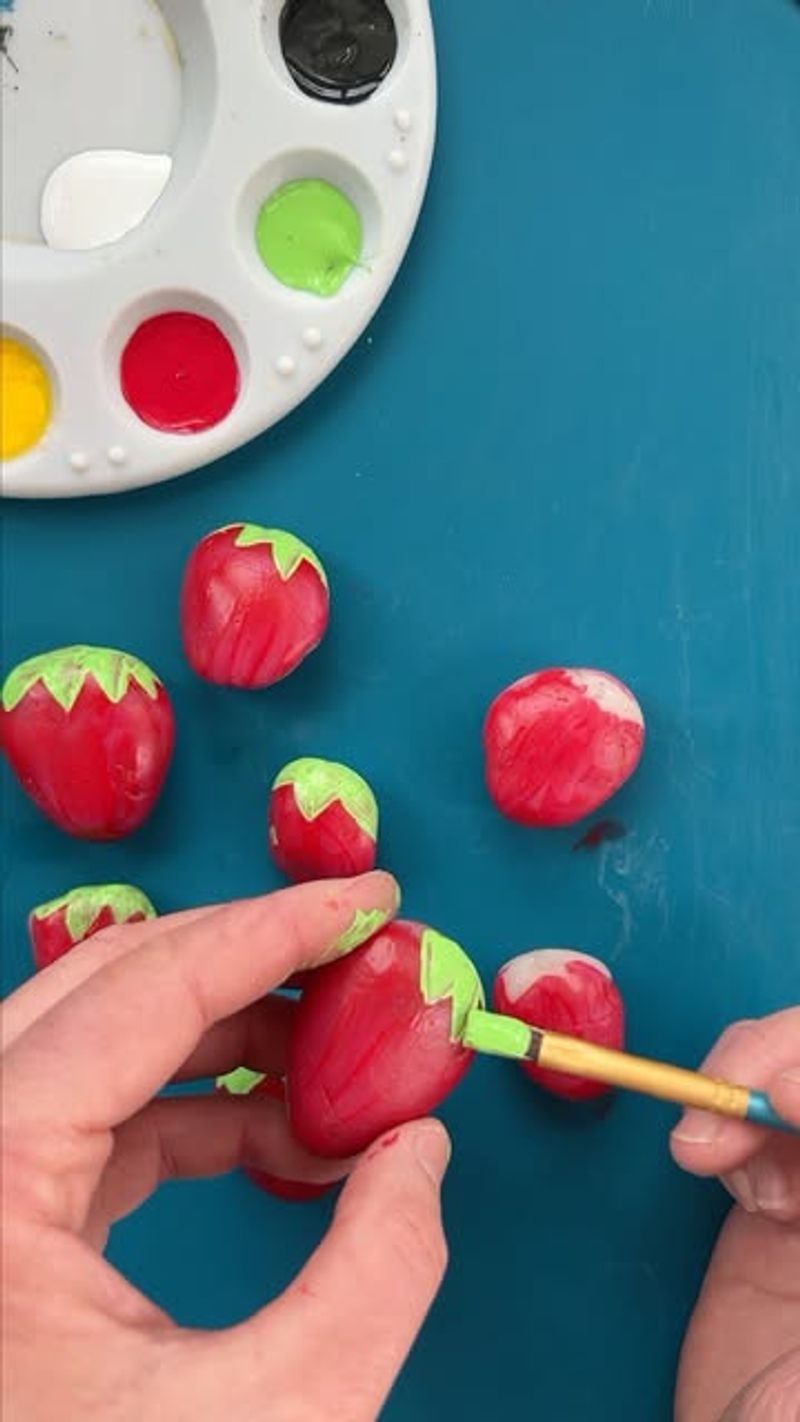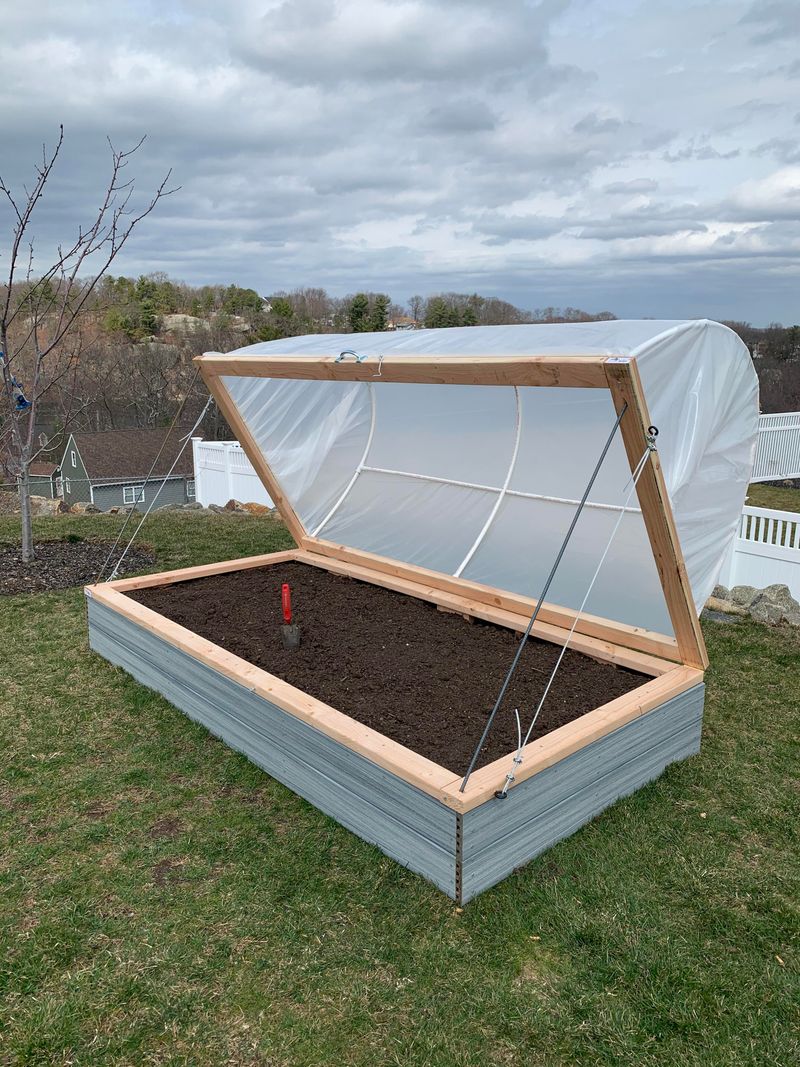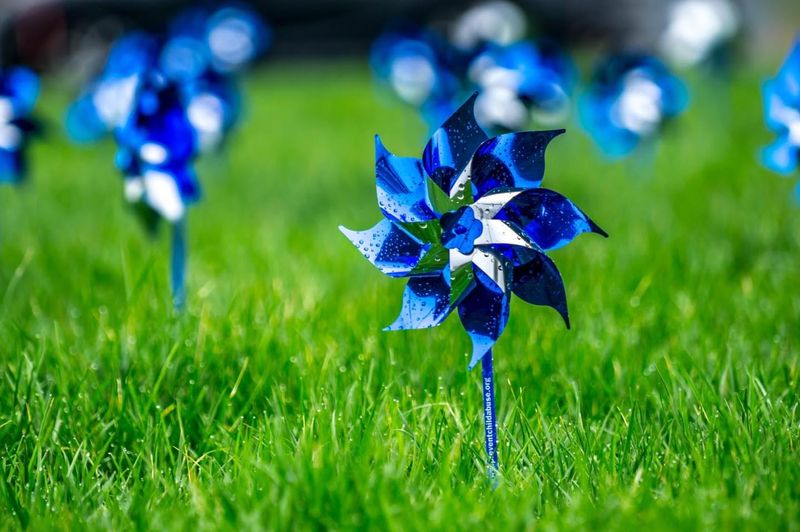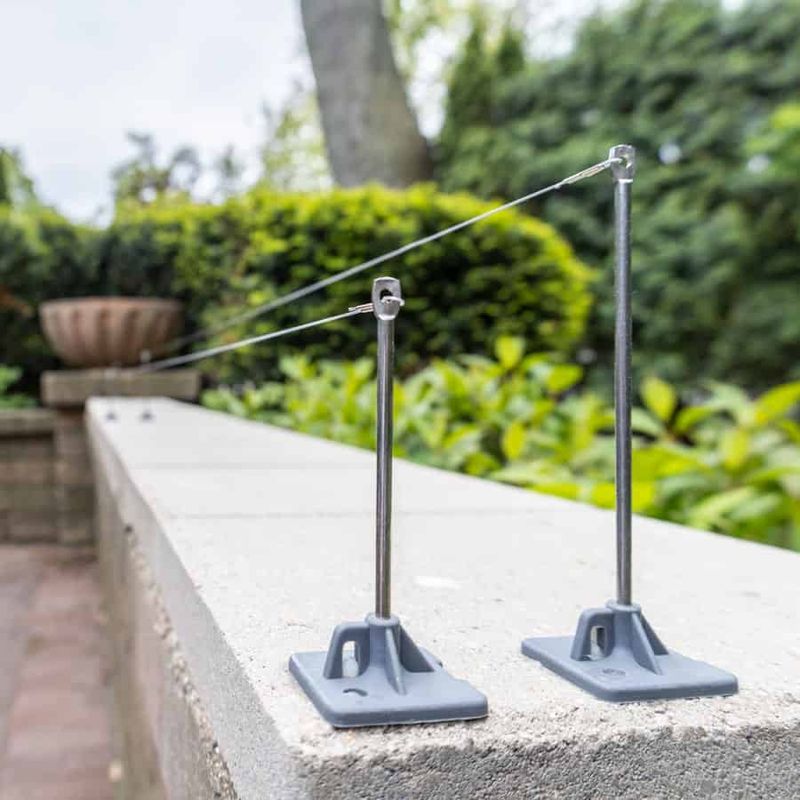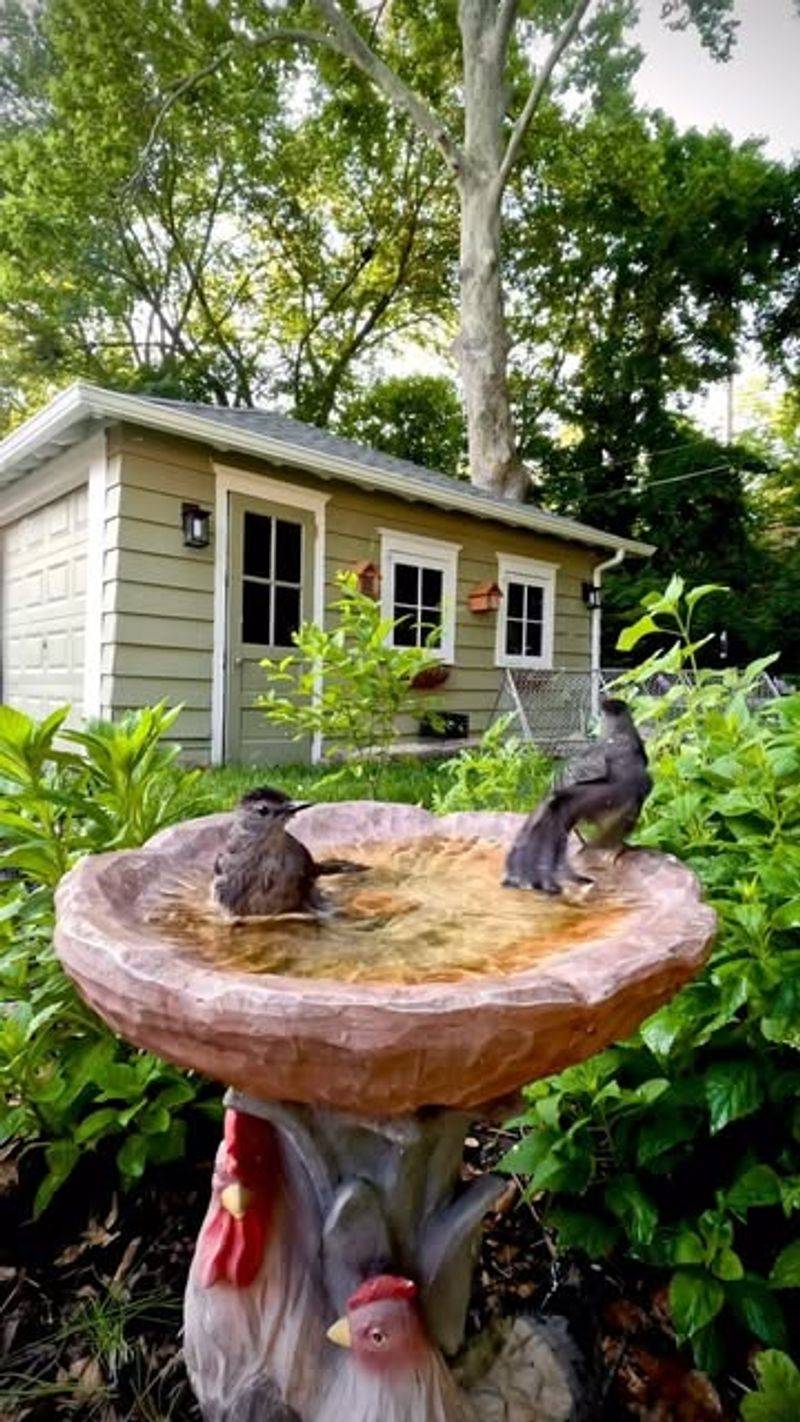You work hard to grow juicy fruit in your garden—but birds often help themselves before you get a taste. While they’re fun to watch, they can quickly ruin your harvest.
Luckily, there are clever and safe ways to keep them from turning your plants into a snack bar. These smart tricks will help you protect your fruit without hurting your feathered visitors.
1. Install Reflective Bird Tape
Shiny, reflective tape creates flashes of light that confuse and startle birds. When the breeze blows, the tape dances and sparkles in the sunlight, creating an environment birds find unsettling. Hang strips about 2-3 feet apart throughout your garden.
The constant movement and light reflection make birds too nervous to land and feast. For best results, replace the tape periodically as it can fade and lose effectiveness over time.
2. Cover Plants with Protective Netting
Netting creates a physical barrier that keeps birds from reaching your precious fruits. Look for fine mesh that’s specifically designed for gardens – the holes should be small enough that birds can’t poke their beaks through.
Drape the netting over fruit trees or berry bushes and secure it at the bottom with stakes or rocks. Make sure to check regularly for any wildlife that might accidentally get caught, and lift it when you need to harvest.
3. Hang Old CDs or DVDs
Got a stack of scratched CDs collecting dust? Put them to work in your garden! The reflective surfaces create unpredictable light patterns that disorient birds and make them think twice about landing. String them up with fishing line and hang them from branches around your fruit trees.
Space them about 3-4 feet apart for maximum coverage. The spinning discs catch sunlight and create a constantly changing pattern that birds find confusing and intimidating.
4. Set Up a Scarecrow
The classic scarecrow remains popular for good reason – it works! Birds are naturally wary of human figures and will avoid areas where they think people are present. Create your scarecrow using old clothes stuffed with hay or rags.
Move it around every few days so birds don’t get used to seeing it in one spot. For extra effectiveness, add elements that move in the breeze like ribbons or aluminum pie plates to make your guardian more intimidating.
5. Plant Decoy Bushes Away From Garden
Sometimes the best strategy is distraction! Plant bird-friendly bushes like elderberry, serviceberry, or mulberry far from your prized fruit garden. These decoy plants give birds their own feeding station. Birds will naturally go for the easier meal and leave your main crop alone.
This method creates harmony in your yard – the birds get fed, and you keep your harvest. Just make sure to place these decoy bushes at the opposite end of your property from your garden.
6. Use Predator Decoys
Fake owls, hawks, or snakes tap into birds’ natural fear of predators. Position these decoys near your fruit trees or bushes to make smaller birds think twice about stopping for a snack. The key to success is movement and relocation.
Move your decoys every few days to new spots around your garden. Some gardeners attach them to springs or swivels so they move naturally in the breeze, making them more convincing to wary birds.
7. Create Noise Deterrents
Wind chimes, aluminum pie plates, or small bells create unpredictable sounds that make birds nervous. The random noises prevent birds from getting comfortable enough to settle in for a feast. Hang these noise-makers from branches throughout your garden. Even empty tin cans strung together can work well.
The key is creating sound that changes with the wind, keeping birds on high alert and encouraging them to find quieter dining spots elsewhere.
8. Try Scare Balloons
These specially designed balloons feature large predator eyes that trigger birds’ instinctive fear response. The balloons move with the wind, making them seem alive and unpredictable to visiting birds. Hang several scare balloons at different heights throughout your garden.
Many gardeners report immediate results with this method. The combination of movement, bright colors, and those eerie “eyes” creates a triple threat that keeps most bird species away from your precious fruit.
9. Spray Fruit with Bird Repellent
Non-toxic bird repellents create tastes or smells birds dislike without harming your fruit. Many commercial options contain grape extract or other natural ingredients that birds avoid. Follow package directions carefully and reapply after rain.
Most need to be sprayed directly on fruit several days before harvest. Wash your fruit thoroughly before eating, even though these repellents are typically food-safe. This method works especially well for smaller garden areas.
10. Install Motion-Activated Sprinklers
Modern technology offers a humane solution to bird problems! Motion-activated sprinklers detect movement and release a short burst of water that startles birds without harming them. Position these devices near your fruit trees or bushes.
Birds quickly learn to avoid the area after a few surprising showers. As a bonus, these sprinklers help water your garden while protecting it. Just remember to turn them off before you go harvesting, unless you want a shower too!
11. Harvest Fruit Early
Sometimes the simplest solution works best! Many fruits can ripen off the vine or branch if picked slightly early. This strategy lets you harvest before birds discover your crop is ready. Research the specific fruits you’re growing to know when they can be picked.
For example, peaches and tomatoes continue ripening after harvest, while berries generally need to be fully ripe. Store picked fruit properly – some need cool, dark places while others do better on a sunny windowsill.
12. Paint Rocks to Look Like Strawberries
This clever trick works especially well for protecting berry patches! Paint small rocks red and place them among your plants before real berries form. Birds will peck at these decoys, find them unsatisfying, and often avoid the area afterward. Use non-toxic, outdoor paint for this project.
Place painted rocks throughout your berry patch several weeks before your real fruit ripens. Birds that try to eat these “berries” quickly learn the area doesn’t offer good food and move on to easier meals elsewhere.
13. Grow Fruit in Covered Raised Beds
Raised beds with PVC hoops and covering offer excellent protection for smaller fruit plants like strawberries and blueberries. The frame creates a mini-greenhouse that birds can’t access. Build simple hoops using PVC pipe bent in an arch over your raised bed.
Cover with bird netting or row cover fabric, securing the edges with rocks or soil. This method provides complete protection while still allowing sunlight, air, and water to reach your plants.
14. Play Recorded Predator Sounds
Modern technology offers a unique solution! Small solar-powered devices play recordings of hawk calls, owl hoots, or distress signals from smaller birds. These sounds trigger natural fear responses in garden visitors. Place these devices near your fruit trees and set them to play at random intervals. Many have motion sensors that activate when birds approach.
The unpredictable timing keeps birds from getting used to the sounds, making this an effective long-term solution for larger garden areas.
15. Hang Shiny Pinwheels Throughout Garden
Colorful pinwheels create movement, noise, and light reflections that birds find disturbing. The spinning motion and occasional clicking sounds make your garden seem unsafe to cautious birds. Stick pinwheels into the ground around your fruit plants or attach them to stakes or fences.
Choose metallic or reflective pinwheels for maximum effect. The constant motion creates an unpredictable environment that makes birds too nervous to land and feed.
16. Create a Fishing Line Barrier
Nearly invisible fishing line strung around your plants creates a barrier birds can feel but can’t see. When they bump into these mysterious obstacles, most birds get spooked and leave. String fishing line in a grid pattern about 3 inches above your plants and around the perimeter.
Use sturdy stakes or branches to support the lines. Birds dislike the sensation of flying into something they can’t see, and will typically avoid the area after a few encounters.
17. Provide a Bird Bath Away From Garden
Sometimes birds visit gardens for water more than food! Setting up a bird bath far from your fruit plants gives birds what they need while drawing them away from your harvest. Place your bird bath at least 20 feet from valuable fruit plants. Keep it clean and filled with fresh water.
Many gardeners find this simple distraction technique reduces fruit damage significantly while still allowing them to enjoy watching birds visit their yard.


